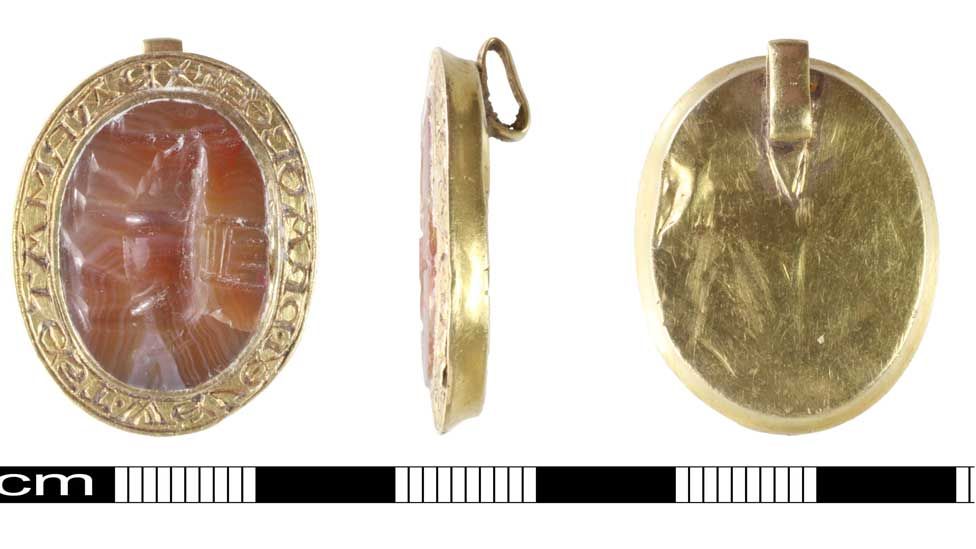Damaged Medieval Seal Discovered in Eastern England
According to a BBC News report, a metal detectorist in eastern England discovered a 13th or 14th Century seal badly burned in Gayton, Norfolk, in August. Norfolk finds liaison officer Helen Geake said it told “quite a story”.
“Would people have known that it was Roman – was it kept all those centuries and re-set in silver, or was it a chance find?” she said.
The intaglio is now an opaque grey but was “almost certainly carnelian”, a brown-red gemstone. It depicts a winged figure, believed to be the god Mars holding a spear, with Victory to his right, a report on the find states.
Ms Geake said: “I think they [Medieval people] probably would have thought it was from the Mediterranean and the Crusades and not Roman, as in Roman Britain,” added Ms Geake.
The silver seal matrix which encases it would have been flat but due to heat damage has a lumpy, rounded reverse with a hole, revealing the back of the intaglio.
Parts of the edges are missing, making the inscription tricky to decipher – although it does not appear to show a generic motto, Ms Geake said.
“They were primarily used as a way to sign a document, to authenticate it, probably at a time when you had someone to do the writing for you,” she added.
“Somebody with this calibre of the seal was aristocratic and very high up.
“It’s still a mystery who that might have been, but these belonged to really top people – barons, bishops, the top 1%.
“If only we could read it; perhaps there is a Latin scholar out there who can.” More than 50 seal matrixes have been found nationwide, 30 of the silver, with this the fourth to be found in Norfolk.

The Gayton find, measuring 29mm (1in) by 18.5mm (0.72in), is the only seal matrix that has been burned. It was discovered by a metal detectorist.
“It’s very peculiar – was it just an accident, was it lost in the countryside and then got in a heath or forest fire?” said Ms Geake.
“It’s seen a lot of action.”
Its status as treasure is subject to a coroner’s inquest on Monday and Norwich Castle Museum hopes to buy it.





